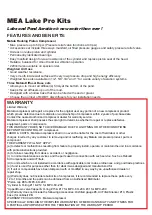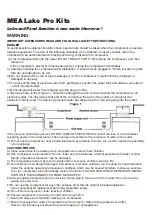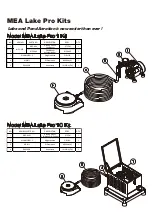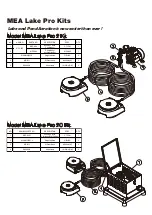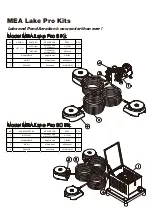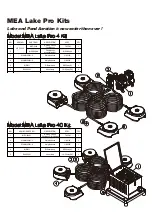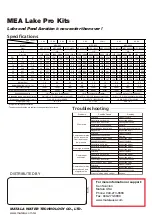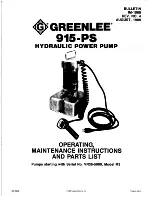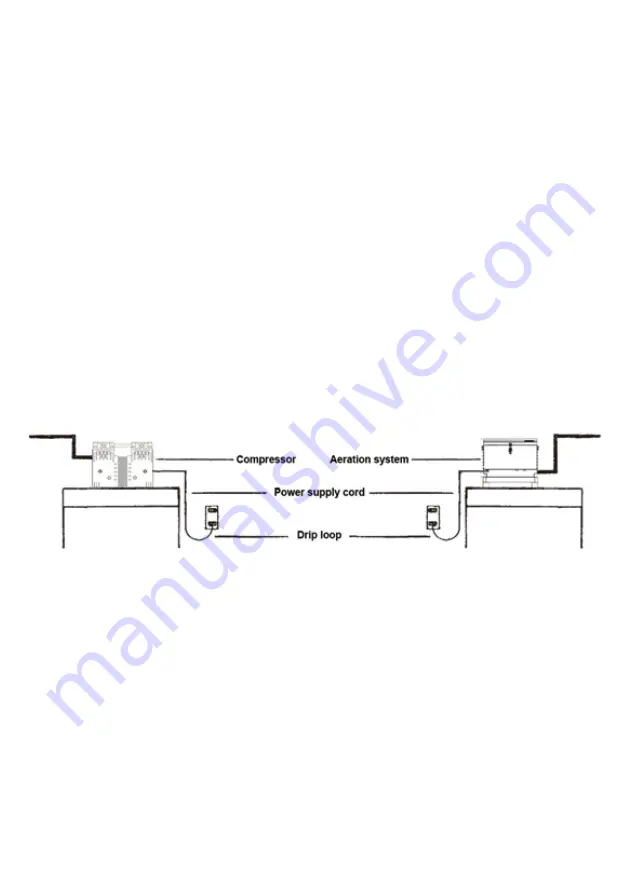
Lake and Pond Aeration is now easier than ever !
MEA Lake Pro Kits
WARNING:
IMPORTANT SAFEGUARDS READ AND FOLLOW ALL SAFETY INSTRUCTIONS.
DANGER
To avoid possible equipment electric shock, special care should be taken when the compressor is used as
aeration equipment. For each of the following situations, do not attempt to repair yourself, return the
ompressor to an authorized service facility servicing, or discard the compressor.
I) If the compressor falls into the water, DO NOT REACH FOR IT: first unplug the compressor, and then
retrieve it.
If the compressor’s electrical components get wet, unplug the compressor immediately.
II) Carefully examine the compressor after installation. It should not be plugged in if there is water on parts
that are not intended to be wet.
III) Do not operate if the cord or plug is damaged, or if the compressor is malfunctioning, dropped, or
damaged in any way.
IV) To prevent the plug of electrical outlet from getting wet, position the water tank and stand to one side of
a wall mounted outlet.
This should prevent water from dripping onto the plug or outlet.
A drip loop shown in the (Figure 1), should be arranged for each cord connecting the compressor to an
electrical outlet. The drip loop is that part of the cord below the level of the outlet or connector if an
extension cord is used. The drip loop prevents water traveling along the cord and going into the outlet.
If the plug and outlet does get wet, DO NOT UNPLUG THE CORD: Disconnect the fuse or circuit breaker
supplying power to the compressor. Then unplug and examine for the presence of water in the outlet.
V) Do not use the compressor near volatile liquid such as gasoline, thinners, etc, as this creates the possibility
of an explosion.
CAUTIONS FOR USE
A) Close supervision is necessary when an appliance is used or near children.
B) This compressor is air-operated. Do not, under any circumstances, attempt operation with water or other
liquids, otherwise compressor may be damaged.
C) The temperature range may result in malfunction of severely shortened service life.
D) Do not block the air being discharged. Compressor must have sufficient room to allow for heat dissipation.
Under the extreme operating temperature conditions which may be caused by failure to observe cautions
C) or D), compressor will automatically switch off until cool. DO NOT REMOVE COMPRESSOR CASING
UNTIL UNIT IS DISCONNECTED FROM MAIN SUPPLY.
E) Always unplug compressor prior to servicing. Grasp plug to remove cord from outlet. Do not remove by
pulling on power cord.
F) Do not use the compressor for any other purpose other than its original intended application.
Use of unauthorized replacement parts may jeopardize safety.
G) Do not store compressor under freezing condition.
H) Ensure compressor is securely mounted prior to operation.
I ) Read and observe all important markings on compressor.
J) Ensure that extension cords (if required) have the correct or higher rating (amperes or watts).
Ensure cord is properly positioned to prevent tripping or entanglement.
Figure 1


